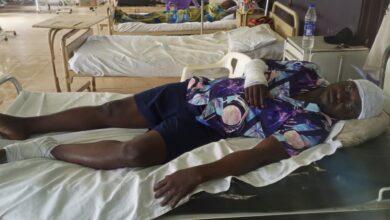Global Movement Of Mosquitoes Poses Threat Beyond Zika – Mosquito Experts

Experts have warned that the Zika virus was just one of a growing number of continent-jumping diseases carried by mosquitoes threatening swathes of humanity.
Anna-Bella Failloux, Head of the Department that tracks mosquito viruses at France’s Institut Pasteur, gave the warning on Monday in Paris.
Failloux said controlling the spread had become imperative, because as of today, the focus was on Zika, but that they could carry many different viruses and pathogens.
“You’ve got a global movement of mosquitoes and a huge increase in human travel.
“Humans are moving the pathogens around and the mosquitoes are waiting there to transmit them,” he said.
The researcher said globally, disease-carrying mosquitoes were advancing at speed, taking viruses such as dengue and Zika and the concern is that species were spreading everywhere.
He noted that there are also a host of lesser-known ills such as chikungunya and St. Louis encephalitis, into new territories from Europe to the Pacific.
Failloux noted that in 2014, there was a large outbreak of chikungunya, which caused fever and joint pains, in the Caribbean, where it had not been seen before, while the same virus sickened Italians in 2007 in a wake-up call for public health officials.
“Europe has seen the re-emergence of malaria in Greece for the first time in decades and the appearance of West Nile fever in eastern parts of the continent.
“Out in the Atlantic, the Madeira archipelago reported more than 2,000 cases of dengue in 2012, in a sign of the northerly advance of what at least until Zika has been the world’s fastest-spreading tropical disease,’’ he said.
Failloux recalled that in the past 40 years, six new invasive mosquito species had become established in Europe, with five arriving since 1990, driven in large part by the international trade in used vehicle tires.
“Mosquitoes lay their eggs in the tires and they hatch when rain moistens them at their destination.
Jolyon Medlock, a Medical Entomologist at Public Health England, a government agency, said the speed of change in mosquito-borne diseases since the late 1990s had been unprecedented.
He siad reaserch had revealed that the biggest potential threat is Aedes albopictus, otherwise known as the Asian tiger mosquito, which is expanding its range widely and is capable of spreading more than 25 viruses, including Zika.
Medlock said the human incursions into tropical forests had aggravated the problem.
“Deforestation in Malaysia, for example, is blamed for a steep rise in human cases of a type of malaria usually found in monkeys.
“There have been some victories against mosquitoes, thanks to insecticide-treated bed nets and vaccines against viruses like yellow fever and Japanese encephalitis, as well as a new one for dengue approved in December,’’ he said.
Ralph Harbach, an Entomologist at London’s Natural History Museum, who has been studying mosquitoes since 1976, said there is strong evidence that Aedes albopictus is now out-competing aegypti in some areas and becoming more dominant.
He said in the U.S., Aedes albopictus had been found as far north as Massachusetts and as far west as California. In Europe it has reached Paris and Strasbourg.
Harbach said that to the challenge for public health authorities were the blurred lines between diseases carried by different mosquitoes.
He said a recent research in Brazil in March showed that another common mosquito, Culex quinquefasciatus, may also be able to carry Zika.
“Both Aedes aegypti and Culex quinquefasciatus probably first arrived in the Americas from Africa on slave ships, scientists believe.
“In the centuries since, commerce has shuttled other species around the world, while air travel had exposed millions of people to new diseases.
Experts noted reports by Bill & Melinda Gates Foundation showed that mosquitoes still killed around 725,000 people a year, mostly due to malaria, or 50 per cent more than are killed by other humans.
It said further that climate change also added a further twist, as 2 to 3 degree Celsius rise in temperature can increase the number of people at risk of malaria by 3 to 5 per cent, or more than 100 million.
It also explained that hotter weather also speeds up the mosquito breeding cycle from around two weeks at 25 degrees to 7 to 8 days at 28 degrees.
Meanwhile, experts said it is time to wipe out mosquitoes altogether.
They said aggressive action in the 1950s and 1960s, including the use of the pesticide DDT, certainly pushed them back for a while.
“Today, genetic modification, radiation and targeted bacteria are being considered.
“Trying to eliminate all mosquitoes, however, would make no sense, since there are 3,549 species and fewer than 200 bite humans.
“It might be possible to wipe out a few species but we don’t want to wipe out the good guys because a lot of them serve as food for frogs, fish and bats,” they said.
(Reuters/NAN)




